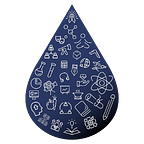How did it all start?
Beautiful tingling or noise measured in hertz, is what we’re reading all about today and much more. It’s the reason why our ear lobes exist. It’s the sound, the audio.
Sounds are everywhere; its time you learn from them.
The terminology used to describe any sound or noise, that lies within the range we living beings can hear. It’s especially known as a recorded or transmitted sound signal. The word audio was tuned into life in the year 1934. Abstracted from the Latin word audire, to “hear”, and from the PIE root *au; “to perceive”. It’s amusing to note that in the timeline of inventions, the first audio was recorded on a fine Sunday of April 9th, 1960,
It was Édouard-Léon Scott de Martinville, a French inventor, who took this initiative that formed the history for a lifetime. His voice hummed into the melodious French Folk song of “Au Clair de la Lune” that had been recorded for ten seconds, which formed the earliest sound clip of humankind.
This delicate piece of sound was recorded by a device Édouard-Léon Scott invented himself, a phonautograph.
A phonautograph is an extraordinary machine used for the mechanical recording and reproduction of the world of sounds. The device later became the most common device for playing recorded music from 1870’s through the 1980’s. After this fruitful invention that revolutionized the world, Thomas Edison said to a news reporter,
“Of all my inventions, my favorite is the phonograph.”
It was a gleeful moment when later Thomas Edison was credited to be the founder of the recorded sound era.
The phonograph preceded the brilliant stereo. Established by Alan Blumlein, who was respected to be one of the most outstanding engineers in the 20th century. It is upsetting and heartbreaking that the world has not known his name enough. This is due to his tragically short life span and the Second World War invasion, where all of his work demanded utmost confidentiality.
Even in his short life, Blumlein was the one to introduce the stereo LP. Later he innovated various ways to document and record stereo that is still used today in 2021. Greatly influenced by Alan Blumelin’s groundbreaking work, Ted Fetcher was the first one to produce air sound speakers. He also coined the term ‘psychoacoustics”, a concept about how human beings perceive different sounds. It’s now a full-fledged subject and profession today.
We’ve come up a long way into the world of audio.
These three simple but ingenious innovations marked the historical story of sound. Mono, stereo, and airsound led to the magnificence journey of the production of sound today.
